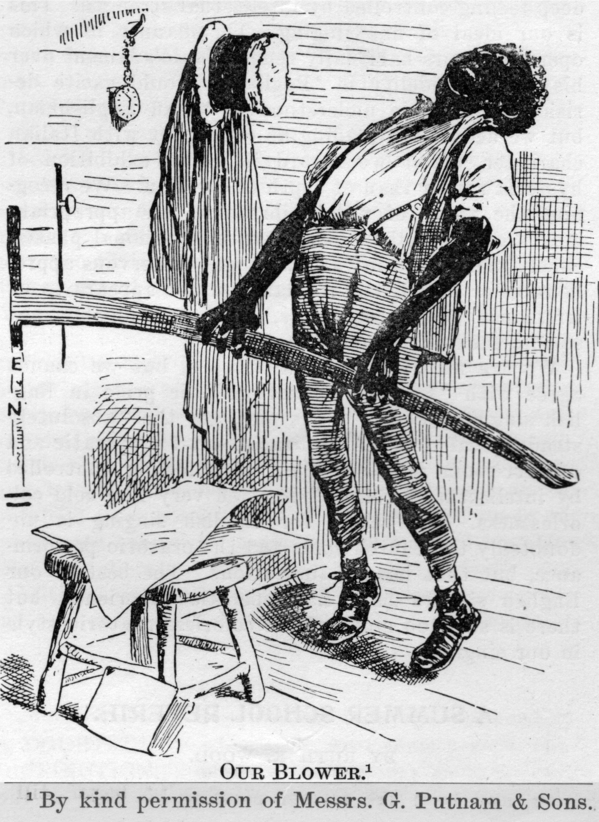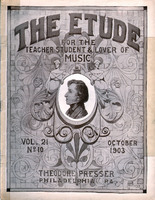In procuring a new organ the value of a well-balanced specification cannot be overestimated. While it is true that the voicing of each stop plays an important part in the final result, the selection of the stops at the outset has more to do with the musical possibilities of the finished instrument than is at first realized.
The smaller the organ, the greater the necessity of a carefully prepared specification. I have been called upon several times to “open” new organs the specifications of which were evidently prepared with the sole idea of getting as much power from the instrument as possible, regardless of the much greater demand for soft combinations and effects which are required in every instrument. Per contra, one occasionally finds an instrument with a great variety of soft stops and very few stops which add solidity to the “full organ.”
As the backbone of every organ is the “diapason tone,” each organ, whether it has one or five manuals, should contain an Open Diapason of 8 feet in the Great Organ, the size of the scale and the voicing depending on the size of the instrument.
A small, one-manual organ is only a little better than no organ at all; but occasionally a church has at its disposal insufficient money and space to permit the purchase of a larger instrument. If the organ is to have only one manual there should be at least four manual stops and one pedal stop—the above-mentioned Open Diapason, a soft stop of 8-feet pitch, as Salicional, Viola, or Dulciana; an 8-feet Flute, preferably the Stopped Diapason; and a 4-feet stop, to prevent the dullness of tone which results from continued use of only 8-feet stops. All the stops except the Open Diapason must be inclosed in the swell-box, and some prefer to include that stop therein. When the Open Diapason is inclosed the tone of the full organ is much subdued in the loud passages, while if it is not inclosed the contrast between the other stops and the Open Diapason is generally too great.
It is a simple matter to prepare a specification for a one-manual organ with five stops which will be as satisfactory as such a small organ can be; but it is equally simple to plan a specification which will prove provokingly inadequate. I remember some years ago playing such an organ. The list of stops was: Open Diapason, Salicional, Doppel Flöte, Octave, and Pedal Bourdon. All the manual stops were inclosed in the swell-box. The Salicional answered for the softest passages, though it was more like a Viola da Gamba, and would have been more satisfactory if it has been softer. The Doppel Flöte was too loud for soft flute passages, and the Octave was useless except for full passages, when the whole power of the instrument was required. There were no “combinations” in the organ, as the Doppel Flöte was so loud that the Salicional could not be heard if combined with it, and the Octave was too “cutting” to be used with any stop but the Open Diapason.
Now a Viola, or a very soft-toned Salicional, a Stopped Diapason, and a Harmonic Flute of 4 feet in place of the three stops mentioned would have trebled the possibilities of this instrument. The Viola would have answered for the softest stop and for the 8-feet string-tone. The Stopped Diapason alone would have given a convenient 8-feet flute-tone, and would have combined well with either the Salicional or the Flute. The Harmonic Flute used an octave lower than the music was written would have given another quality of flute-tone. If combined with the Viola or with the Stopped Diapason, pleasing combinations would have resulted. Starting with the Viola and adding the Stopped Diapason, the Flute, and the Open Diapason a gradual crescendo could have been made, and the effect of the full organ would have been a little less “sharp” (owing to the absence of the Octave), but more agreeable when used for some length of time without contrast.
If the organ is to have two manuals there is the same opportunity to multiply or diminish the possibilities of the instrument. Another organ (two manuals) which I “opened” had for a specification: Great: Open Diapason, Dulciana, Octave. Swell: Viola, Harmonic Flute (8 feet), Principal (4 feet). Pedal: Bourdon. In the Great there was no stop between the Dulciana and the Open Diapason, and, hence, no solo stop. The absence of a Flute of either 8-feet or 4-feet pitch was unfortunate, as such a stop is frequently required in accompaniments as well as in solo-playing. The same may be said of the Octave in this organ, as in the first organ mentioned above. In the Swell the Harmonic Flute of 8 feet was out of place. While it is useful in a good-sized organ, it is too “proud” for a small instrument, as it does not always combine well. The Principal was of little service, as it is too obtrusive for soft passages. It was impossible to play a solo on the Great, with accompaniment on the Swell, as the three stops of the Swell were not loud enough to accompany the Open Diapason, and no other stop in the Great would answer as a solo stop. The only solo stop in the Swell was the Harmonic Flute, the Dulciana being too loud to accompany the Viola.
If a Melodia had been substituted in the Great for the Octave, a little of the brilliancy of the full organ would have been sacrificed, but the gain of a Flute for solo and accompaniment purposes, as well as the value of a mezzoforte combination in the Great (Melodia and Dulciana), would have compensated many times over. In the Swell the substitution of a Stopped Diapason and Harmonic Flute of 4-feet pitch in place of the Harmonic Flute of 8-feet pitch and Principal would have added five pleasing combinations to the organ without sacrificing anything of value.
The speaking stops of an organ are used in three distinct manners, and all but a few of the stops can be used in each of the three manners, viz.: (1) alone, as an individual stop; (2) in combination with one, two, or three other stops, giving what we call “combinations”; (3) combined with all or nearly all the stops of the manual for loud or full effects. Every stop, except the mutation stops, can be used in the first manner, some more and some less than others. Every stop except the loud mutation stops can be used in the second manner; and all but the softest stops, such as the Æoline and Dulciana, and fancy stops like the Vox Humana, have more or less value in the third manner.
The value of a stop in an organ can be estimated by its value in the three manners mentioned. To illustrate: Take the Principal in the Swell of the organ mentioned above. This stop has very little value in the first manner (it may be used to limited extent an octave lower), and has no value in the second manner. In the third manner it has its greatest value, and, if there are numerous “combinations” in the manual, exclusive of the stop, its value in the third manner is of great importance; but, if its presence in the manual excludes some stop which would give much more value in the first and second manners, as well as considerable value in the third manner, the other stop would be more serviceable in the organ. If this swell organ contained the following stops,—Bourdon, Open Diapason, Stopped Diapason, Salicional, Æoline, Harmonic Flute (4 feet), Violina, Flautino, Dolce Cornet, and Oboe,—the presence of such a large number of stops which are valuable in the first and second manners would render the addition of this stop (Principal) more valuable than the addition of such a stop as the Quintadena which has no value in the third manner, but considerable value in the first and second manners.—Everett E. Truette.




